

South Salt Lake
Food Truck League
Square Kitchen Eatery nurtures culinary talent
By Peri Kinder |
peri.k@thecityjournals.com
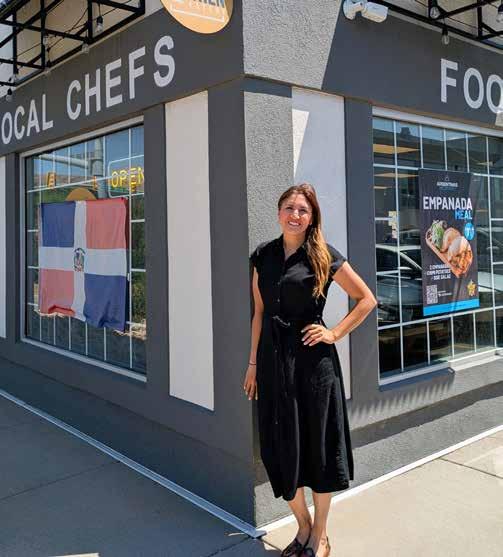
The mini food hall showcases and supports up-and-coming chefs
Editor’s note: In this special edition you’ll find articles related to all things food.
Square Kitchen Eatery in South Salt Lake isn’t just dishing out great food; it’s serving up opportunity. Designed as a testing ground for food entrepreneurs, the space gives chefs a chance to launch their menus and brands without the high overhead of a traditional restaurant.
Started by Ana Valdemoros and Tham Soekotjo, Square Kitchen Eatery (2435 S. State St.) is an extension of their Square Kitchen incubator, where chefs can learn all the aspects of the food industry to help them grow and scale their business sustainably.
Valdemoros owns Argentina’s Best Empanadas, which she started in her dorm room at the University of Utah. She eventually moved into a commercial kitchen, but it didn’t always accommodate her schedule. Her empanadas can be found at farmers markets and the Square Kitchen Eatery, but the journey was hard. She wants to make things easier for the next generation of food entrepreneurs.
“It’s one thing to prepare food for a farmers market on Saturday morning and then you’re done Saturday night,” Valdemoros said. “It’s another thing to be open every day, providing food with all the logistics, costs and marketing that you need to do. Square Kitchen Eatery provides all the things it takes to run a restaurant successfully and keep growing.”
Up to seven chefs can sign a one-year lease to work out of the kitchen that includes access to commercial equipment, a restaurant-style dining room, real-world experience and the opportunity to build a brand. Owners
can choose their own service hours, with the option of being open 24/7.
Currently, five owners run their restaurant through Square Kitchen Eatery. The diverse menu offers food items people can’t find anywhere else.
Hispaniola Bistro opened in February, becoming the first Dominican restaurant in the state. Rusty Birds makes rotisserie chicken-based salads and wraps. Comfort Bowl has an award-winning Japanese fried chicken katsu. Shiba Boba has a variety of teas that include brown sugar, oat milk or ice cream. Argentina’s Best Empanadas uses locally-sourced products and fresh ingredients. Several of these businesses also operate food trucks.
“I want people to come and try all the businesses. Every menu is different, so you have five different options. You can come five different times,” Valdemoros said. “Supporting small businesses is very important. When we support locally-owned businesses, all the money that is spent here stays here. If you make one business successful, so they can go out on their own, that leaves room for the next one.”
While leases can be renewed, Valdemoros hopes each chef will eventually graduate to launch a restaurant of their own.
“The platform helps them a lot. There are things they need to learn to make sure they’re able to cover things on their own, without any help,” she said. “Here, there’s a rental cost, but it’s more than that. The Square Kitchen company covers utilities, the cleaning crew,
Continued page 8


Ana Valdemoros started Argentina’s Best Empanadas and is co-owner of Square Kitchen Eatery, a restaurant incubator that supports rising stars in the Utah food industry. (Peri Kinder/City Journals)










Reclaiming Life: Innovative Approaches to Managing Chronic Pain
For many, chronic pain is a relentless companion, impacting every facet of daily life. But hope is on the horizon. Breakthroughs in pain management being used at CommonSpirit hospitals are offering new avenues for relief, moving beyond traditional methods to provide more targeted and effective solutions.
Chronic lower back pain is one of the most common challenges. One of the most promising advancements for managing chronic low back pain, particularly for individuals suffering from vertebrogenic pain, is radiofrequency ablation (sometimes referred to as Intracept). This minimally invasive treatment is designed to provide long-lasting relief and improve overall quality of life by addressing the source of the pain, rather than simply masking the symptoms. In this procedure, a small probe is inserted through a tiny incision and guided to the basivertebral nerve and then radiofrequency ablation is used to disrupt the nerve’s ability to transmit pain signals.
“Radiofrequency ablation represents a significant shift in how we approach chronic lower back pain,” explains Dr. Snigdha Ancha, a leading pain management specialist. “By directly targeting the nerve responsible for transmitting pain, we can provide lasting relief for patients who haven’t found success with other treatments.”
But what makes radiofrequency ablation
so effective? Traditional pain management often relies on medications, physical therapy, or injections, which can provide temporary relief but don’t always address the underlying cause. Intracept, on the other hand, offers a more permanent solution by disrupting the pain pathway. Studies have shown significant reductions in pain scores and improved function in patients who have undergone the procedure.
Beyond radiofrequency ablation, other innovative techniques are gaining traction. Neuromodulation therapies, such as spinal cord stimulation (SCS), are becoming increasingly sophisticated. These devices deliver mild electrical impulses to the spinal cord, interrupting pain signals before they reach the brain. Newer SCS systems are designed to be more comfortable and customizable, allowing for personalized pain relief.



“We’re seeing remarkable results with neuromodulation,” says Dr. Jeffrey Pence, a pioneer in pain management technology. “The ability to fine-tune the stimulation to match each patient’s unique pain pattern is a game-changer. It’s not just about reducing pain; it’s about restoring quality of life.”
In addition to these advanced procedures, a holistic approach to pain management is crucial. This includes:
• Physical Therapy: Strengthening muscles, improving flexibility, and restoring function
• Cognitive Behavioral Therapy (CBT): Helping patients manage pain through coping strategies and behavioral changes
• Mindfulness and Meditation: Reducing stress and improving pain tolerance
It’s important to remember that pain management is not a one-size-fits-all solution. The best approach is tailored to each individual’s specific needs and circumstances. A comprehensive evaluation by a qualified pain management specialist is essential to determine the most appropriate treatment plan.
If you’re living with chronic pain, don’t lose hope. The advancements in pain management are offering new possibilities for relief and a chance to reclaim your life. Talk to your doctor about the latest techniques and find a path that works for you.

Learn more about the services, care providers and missiondriven work of the Holy Cross hospitals and CommonSpirit Health at www.holycrossutah.org.

At CommonSpirit Health, we make the healing presence of God known in our world by improving the health of the people we serve, especially those who are vulnerable, while we advance social justice for all.
When minutes count, count on our emergency care. Get to know us before you need us.
When you need emergency care fast, the closest emergency room is a smart thing to know. You never know the level of care you’ll need when an emergency happens and choosing the right ER can make all the difference. And a hospital ER comes with the confidence of additional services right on-site.
Congratulations to CommonSpirit Holy Cross Hospital – West Valley for receiving the Leapfrog Hospital Safety Grade-A Accreditation for the second consecutive time. Leapfrog Hospital Safety Grades are determined based on a rigorous assessment of various safety measures.
Find emergency care close to you at mountain.commonspirit.org
i số 1-303-673-8166 (TTY: 711).
The Other Side Donuts celebrates first year of success
The Other Side Donuts one-year anniversary celebration brings together The Other Side Academy graduates, locals and others who started the organization.
By Sienna Chubak s.chubak@thecityjournals.com
The Other Side Donuts celebrated its oneyear anniversary June 28 with a full-day event that brought in people from all over Utah. With bouncy castles, a dunk tank and doughnut decorating, the shop commemorated their successful year with activities that highlighted who they are.
Donald Bostwick, a recent graduate of The Other Side Academy, said, “I’ve done a lot of bad things in my life; this was a good one.” Now working for Progressive Insurance, Bostwick attended the Academy for two years before beginning his “workout phase,” where he began integrating back into society. He currently borrows a car from the Academy to get to work, but has plans to buy his own and become more independent from the program.
The Other Side Academy works in tandem with The Other Side Village, which is a nonprofit organization that builds tiny homes to help men and women who are coming out of chronic homelessness become a part of a community. Bostwick was on his way to prison when he decided to write a letter to the Academy to try and hopefully do something different, other than keep going in and out of jail, as he had been all his life.
As for The Other Side Donuts, it is the Village’s first social enterprise and all of the proceeds go directly to the Village. CEO Tim Stay said, “It’s just around the corner from The Other Side Village, and many of our residents that live at the Village also work at The Other Side Donuts, so it’s close prox-
imity, but it also gives them employment and job skills and opportunity to become self-reliant.”
The employees working at The Other Side Donuts were every bit as passionate and vibrant as the location itself. Bright colors, rainbows, clouds, flowers and sparkles filled the inside and outside of their shop at 760 S. Redwood Road. Bostwick was happy to include that he was even on the construction crew and cut out the clouds that hung from the ceiling. l

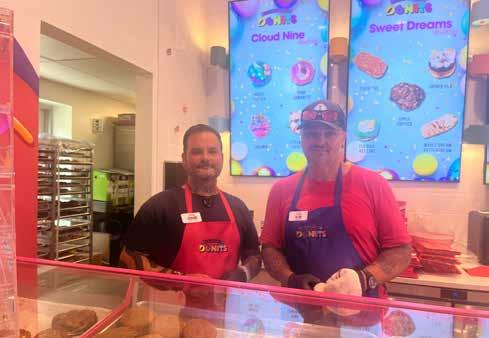

SOUTHJORDAN JOURNAL.COM
SOUTH
SALT LAKE TEAM
The South Salt Lake Journal is a monthly publication distributed directly to residents via the USPS as well as locations throughout South Salt Lake.
For information about distribution please email hello@thecityjournals.com or call our offices. Rack locations are also available on our website. The views and opinions expressed in display advertisements do not necessarily reflect or represent the views and opinions held by Loyal Perch Media or the City Journals. This publication may not be reproduced in whole or in part without the express written consent of the owner. © 2019 Loyal Perch Media, Inc.
PUBLISHER
Bryan Scott | bryan.s@thecityjournals.com
EDITOR
Travis Barton | travis.b@thecityjournals.com
ADVERTISING EXECUTIVES
Mieka Sawatzki | mieka.s@thecityjournals.com
Lindsay Andreasen | lindsay.a@thecityjournals.com
Jason Corbridge | jason.c@thecityjournals.com
Ryan Casper | ryan.c@thecityjournals.com
CIRCULATION COORDINATOR Lydia Rice | lydia.r@thecityjournals.com 385-557-1022
Rack locations are also available on our website.
EDITORIAL & AD DESIGN
Anna Pro
Ty Gorton
Stacey LaMont
SOUTH SALT LAKE CITY JOURNAL 9500 South 500 West, Suite 205 Sandy, UT 84070
PHONE: 801-254-5974
Our mission is to inform and entertain our community while promoting a strong local economy via relevant content presented across a synergetic network of print and digital media.
Published, & Distributed by

The Other Side Donuts employees and The Other Side Village residents Candance (left) and Austin (right). (Sienna Chubak/City Journals)
The Other Side Donuts employees and The Other Side Village residents Jermone (left) and Alan (right). (Sienna Chubak/City Journals)
Milk & Cereal and Funfetti Birthday Cake doughnuts. (Sienna Chubak/City Journals)
Hard work, intense training pays off for Cottonwood softball pitcher
Senior pitcher Gretta Lewis commits to Madison College of Wisconsin to play softball and study.
By Brian Shaw b.shaw@mycityjournals.com
Looking at Gretta Lewis from strictly a numbers standpoint would make any outsider think the recently graduated Cottonwood senior softball player was nobody special.
Those that know, however, would say you should know Gretta.
Lewis was the pin in a grenade that was her at the pitching circle.
Once Lewis got rolling, the 5-foot-6inch, 135-pound righthander unleashed fury from that spot in the chalky dirt.
Madison College witnessed it. Lewis committed to the school located in Wisconsin’s capital city April 15.
Lewis flipped the script in Las Vegas at the Best of the Best Tournament this past January for her 18U Fire Dragons club team, aptly named for a right-handed redhead releasing fireballs from her hand.
Lewis continued doing that for the Cottonwood Colts softball squad this spring, befuddling batters with a 50-mile-per-hour changeup—particularly after she threw heat.
And yet that’s not all that she was. An avid skier and mountain biker, Lewis could probably play Schubert’s “Ave Maria” on violin if asked.
It wasn’t until the ninth grade that she started taking the game of softball seriously; something in the way one could torque their arm a certain direction and hurtle a white ball grabbed hold—and didn’t let go until Lewis was hurtling a fastball at 62 miles per hour as a senior.
Wearing her No. 20 jersey, it was 15 numbers higher than the No. 5 Lewis wore as
a Cottonwood freshman.
It was safe to say that Lewis had grown up in more ways than one; as a freshman and sophomore, her earned run average hovered around 30 and she coughed up roughly 200 runs each season, as the Colts got dressed early in most of their games.
Lewis kept on working, though.
In her sophomore season, Lewis attended a softball pitching camp at Salt Lake Community College for the first time, learning more about her craft in November 2022. By April 2023, Lewis was taking private pitching lessons once a week—in addition to a class once a month.
Something started clicking. Her Fire Dragons club team played in the losers’ bracket at the High School Fall Ball League from August to October 2023 and yet were the ones that emerged as winners. Later that October, Lewis attended a national college showcase camp for the first time, displaying all the hard work she’d put in.
Other student-athletes might have stopped there and trimmed their workloads— Lewis did not. She attended another pitching camp, this time at SLCC every Monday night in January 2024.
As a Cottonwood junior, Lewis’ strikeouts surged from 23 to 73; her ERA dropped by more than half, to 14.49. She allowed fewer hits (140) and walks (66).
Having completed her junior year, Lewis headed to two national pitchers’ camps: a diamond training camp prior to the USSSA Rocky Mountain Western Nationals on June 17 and another the following week, June 24, at a camp for high school juniors entering their senior year.
That June, Lewis was also honored with her first First Team All-Region award as a high school pitcher in a stacked Class 4A Region 10.l

Salt Lake County Public Defender appointed to fill council vacancy
Democrats pick public defender Jiro Johnson to fill county council seat vacated by Arlyn Bradshaw.
By Shaun Delliskave s.delliskave@mycityjournals.com
Salt
Lake County’s governing body has a new member with deep roots in the community and firsthand experience with some of its most pressing social challenges. Remington “Jiro” Johnson, an assistant director at the Salt Lake Legal Defender Association until this month, was appointed to the Salt Lake County Council in mid-June to represent District 1.
Johnson, who is 39, was chosen by the Salt Lake County Democratic Party to succeed Arlyn Bradshaw, who stepped down after 14 years to join the office of County Mayor Jenny Wilson. Under Utah law, when a partisan seat is vacated midterm, the political party of the departing member fills the vacancy.
The race to replace Bradshaw drew unusually high interest, with 17 Democrats filing to be considered. One candidate withdrew before voting, leaving 16 contenders, including nonprofit leaders, community organizers, and experienced political staffers. The party’s central committee used a ranked-choice voting system to whittle the field in multiple rounds. Johnson ultimately emerged as the winner after 13 rounds of balloting, receiving 53 votes to edge out his nearest rival by six votes. He was formally sworn in days later during a brief ceremony at the County Council offices.
District 1 includes much of Salt Lake City, South Salt Lake, and parts of West Valley City. It covers neighborhoods that range from historic eastside areas to diverse westside communities like Glendale and Rose Park. The district is home to major commercial corridors, public transit lines, the Jordan River corridor, and much of the county’s urban homeless population. It has long been a Democratic stronghold in a county where political control is closely contested between Democrats and Republicans.
Johnson was born and raised in Salt Lake City’s Liberty Wells neighborhood. He attended West High School and earned a Bachelor of Science in Political Science with a minor in history from the University of Utah. While in college, he served as president of the Young Democrats of Utah and completed a Hinckley Institute internship at the Utah Legislature.
He went on to earn his Juris Doctor degree from George Washington University Law School in Washington, D.C., graduating with honors as both a George Washington and Thurgood Marshall Scholar. While in law school, he worked at the Federal Election Commission, focusing on campaign finance investigations, and contributed to the Federal Circuit Bar Journal.
After clerking and practicing in Washington, Johnson returned to Utah in 2013 and joined Manning Curtis Bradshaw & Bednar, where he worked on complex civil and employment litigation cases. Two years later, he moved

into public defense, joining the Salt Lake Legal Defender Association, where he rose to an assistant director role overseeing operations and training. The office handles thousands of cases each year for clients who cannot afford private attorneys, many of whom face challenges related to housing insecurity, substance use or mental health needs.
Beyond his day job, Johnson has served as president of the Utah Minority Bar Association and sat on the board of LGBTQ+ and Allied Lawyers of Utah. He has taught legal courses at the Utah State Prison and has mentored young attorneys entering the public sector.
Johnson has emphasized that he sees the County Council role as an extension of his work advocating for underrepresented and underserved communities. He has said he will focus on housing affordability, better support for unhoused residents, and treatment-based alternatives to incarceration for people with mental illness or substance use disorders.
His district includes some of the county’s highest concentrations of homelessness, with many residents struggling to secure stable housing. Salt Lake City and surrounding areas have experienced ongoing debates over the siting of shelters, affordable housing development, and the balance between enforcement and social services.
He is the first Black and Japanese-American representative to serve in this role. He uses his Japanese middle name “Jiro” professionally, reflecting his mixed heritage and his commitment to greater representation of historically marginalized communities.
Johnson’s appointed term runs through January 2027, the end of Bradshaw’s original term. He has already indicated he plans to run in 2026 for a full four-year term representing District 1. l
Cottonwood senior Gretta Lewis on signing day. (Photo Gregg Southwick)
Public defender Jiro Johnson was appointed to the county council. (Photo courtesy Salt Lake Legal Defender Association)
Utah’s newest plant-based deli offers variety and convenience
The new plant-based restaurant, Vertical Deli, dishes up a plantbased diet, not a vegan lifestyle.
By Sienna Chubak s.chubak@thecityjournals.com
The Vertical Deli, a new branch of the Vertical Diner, recently opened in June on State Street and 3300 South. Ian Brandt, the founder and owner of the Vertical Deli, has been a part of the plant-based restaurant scene since 1998, but the deli operation is the start of something new.
“A diner has to be a very specific building, whereas a deli can be in a gas station. So it can be placed anywhere. So there’s not really a lot of limitations on that,” Brandt said.
Brandt has been working with general manager Taylor Duffus to create and expand their business. Duffus explained, “We sell a plant-based diet. We don’t sell a vegan lifestyle.” With an already limited audience, the pair is striving to keep their Vertical Deli doors open to more than just vegans.
Brandt is no stranger to catering to a smaller customer base. After studying hospitality at the University of Utah, he’s wellequipped to deal with the continual societal evolutions that his businesses have gone
through in the past 27 years.
In 2007, with the Diner’s original opening, Brandt began his own manufacturing for the business. He didn’t want to depend on other companies for things like quality control and consistent purchasing, so he got a warehouse and has relied only on his own business ever since.
“I always think there’s a way to make something work. You just have to figure it out. This is a business that should never have worked. Just doesn’t make sense, and it’s working,” Brandt said.
One thing that Brandt remains true to is never changing what he believes in just to bring in more business. “If half the menu were a vegan menu and half the menu was not, we would probably have 10 times the sales, because our food’s good. It just doesn’t speak for everyone’s demand,” Brandt said.
He is uninterested in trying to bring in more business by changing his menu to anything other than plant-based. “I guess that’s the benefit that you get from dining with us. You’re at least buying food from a company that truly believes in the mission behind what we’re doing and is not just trying to do it for the money,” Brandt said.
Their fully plant-based menu is already extensive, providing as many options, if not more, as any other restaurant would have. From breakfast and lunch to desserts and
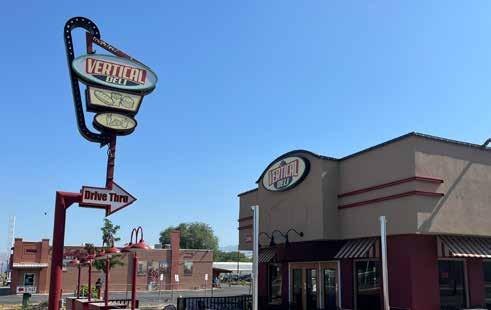
sides, and even a large number of gluten-free options, the Vertical Deli provides a plethora of delicious dishes for anyone to try.
Brandt isn’t interested in looking for a prime retail location, either, since he trusts his audience will find him. The Vertical Deli location isn’t somewhere with a lot of foot traffic like other ideal restaurant spots downtown; however, Duffus explained that they have a loyal customer base already from the
Vertical Diner, and the plant-based community is intimate; the people who want to eat plant-based will find them without a problem. Their new location is the first deli of many coming to Utah, and Brandt and Duffus both remain solid in their goal to keep their plant-based business as one that you can depend on to always honor what they believe in. l

The new Vertical Deli location serving a plant-based diet. (Sienna Chubak/City Journals)
The cost of water in South Salt Lake City is expected to increase significantly in the coming months and years.
By Linda Petersen l.petersen@mycityjournals.com
It
looks like water, both to drink and to get rid of, is going to cost more in South Salt Lake. City leaders recently had culinary and wastewater rates studies done—and the results show that without rate increases (or in the case of wastewater, impact fees for new development) the city won’t have the funds to maintain the systems and to pay for needed infrastructure such as well replacement and renewal.
“We want to think about prudent financial metrics, so thinking about how we fund our annual renewal and replacement or maintenance of that existing infrastructure that’s there today that provides service as well as maintaining target minimum reserve levels so cash in the bank for emergencies, future capital,” consultant Sean Karun told the city council in a May 28 work session.
On June 11, based on recommendations
Water rates going up in South Salt Lake
from the culinary water study by HDR, the city council voted unanimously to increase the culinary water rates by 20% for each of the next three years and by 5.5% for the following two years.
Current rates generate just $975,000 per year, leaving a shortfall for the city to fund infrastructure projects, Karun said at the May 28 meeting.
“When you think about that it feels like that’s a lot of money but that’s not even a good-sized capital project in the water utility but it’s starting to take care of those annual everyday needs that have to happen on the system,” he said.
South Salt Lake City will need to borrow significant additional funds to pay for some of the capital projects such as replacing the Price Avenue well which is anticipated to cost about $8.5 million.
City officials looked at three options for restructuring the culinary water rate; keeping it the same but no longer including usage in the fixed service charge for the first customer tier; having all customer classes continue to pay same rate structure but increasing the usage rates or having two separate rate structures for residential and all other customers. The consultants recommended the city adopt the last option which the city council approved June 11. The increased commercial
rate structure was expected to go into effect July 1 followed by a new residential rate structure in January 2026.
“It’s never quite popular to do increases especially when you’re serving on the city council but when it comes to infrastructure there’s usually two approaches that a city can make,” Councilmember Ray deWolfe said. “They can either do nothing and hope for the best or do something which may not always be popular and plan for the worst. So I think with this action we’re planning for the worst and always hoping for the best and it puts us in a financial position where we know that costs are coming. We know that our water is critical infrastructure for our city and we know that we’re still going to be very competitive among other cities in the area, and it’s in my opinion just responsible.”
On July 1, the city was also expected to release Eye on Water, a new app to help residents track their water consumption.
The findings from the city’s wastewater (sewer) study also indicate an increase there is necessary. This would primarily be felt in the form of increased impact fees by those constructing new homes in South Salt Lake. As the name indicates, impact fees are charged on new construction to cover the cost of how it will impact city services and are usually passed on to the buyers.
The new fees would apply to all new construction in South Salt Lake except for in the Downtown East Streetcar Sewer Public Infrastructure District (PID). This special service district was formed in 2023 to upgrade the sewer system in the area around Burton Avenue and Main Street. Residents in that area pay separate taxes to fund these improvements.
If approved, wastewater impact fees in the PID would increase from $1,063 to $1,160 for each new connection. In areas outside the PID the increase would be significant, going from $1,063 to $11,560 per connection, according to materials provided in the May 28 city council packet.
Wastewater impact fees were last updated in 2014.
“Since that time, construction costs have risen substantially due to a number of factors, including material shortages, labor shortages, and supply chain constraints,” the study said. “There are several growth-related capital improvements anticipated to be needed in the next 10 years, so the calculated impact fee is based on anticipated capital facility projects as well as existing excess capacity and documented historic costs.”
The city council is expected to address this issue in the coming months.l




Survey seeks questions readers have for their local government candidates
Fill out our survey so your candidates know what questions to answer for our Voter Guide.
Welcome to the City Journals survey! We're happy to have you here and for the opportunity to learn about how our newspapers are being utilized in our communities.
In the October issues of our newspapers, we will publish a Voters' Guide to provide readers with information about the candidates listed on each municipal ballot.
We understand how voters can visit many different resources and websites and end up looking at the same information—if not the exact same wording or candidate platforms. We hope to provide readers with the information they want to know about each
candidate. Take a moment to consider what information ultimately makes or breaks your decision to vote for a specific individual in our local elections.
“It’s important to have candidates answer the actual questions their constituents would ask them,” said City Journals Creative Director Bryan Scott. “This is your chance to do that.”

Please respond to the survey found through the QR code, which will take less than three minutes to complete. Your response will help guide the design of our Voters’ Guide.
The “submit” button must be clicked before Monday, Aug. 18 (at 11:59 p.m.).
Thank you for your continued readership and support of your local staff here at the City Journals.
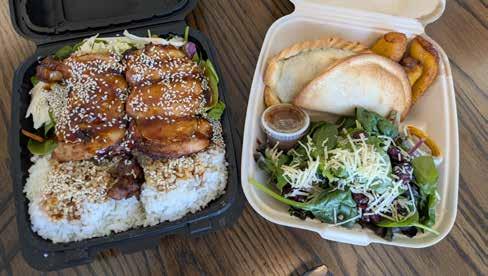
Continued from front page
the taxes, all of the things.”
Valdemoros said South Salt Lake’s city staff has been invaluable in getting the idea off the ground, helping owners acquire the correct licensing and streamlining processes. Mayor Cherie Wood even named Square Kitchen Eatery as the city’s 2025 Best Lunch Spot.
It’s been one year since they first opened, with new chefs and customers finding them
every day. Valdemoros said entrepreneurs can learn about the Square Kitchen program, including costs, equipment available and additional perks at SquareKitchenSLC.com.
“This is a good opportunity, especially in this economy. Food owners can test something, work it out and get immediate feedback. They can understand the logistics, the work and the hassle that goes into a food business.”






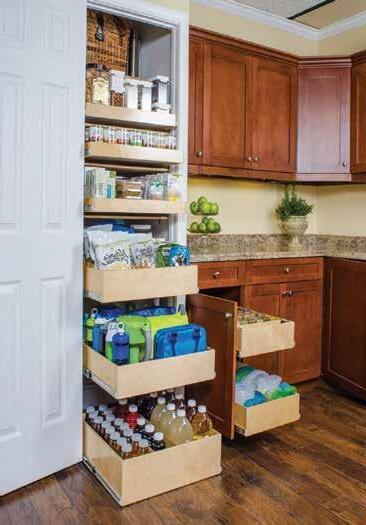











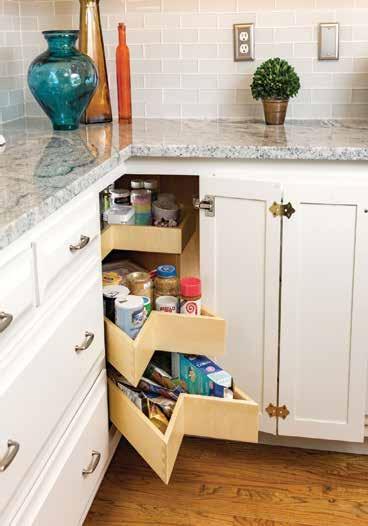

Before all of the many activities, recognitions and celebrations commence this year, it might be worthwhile to take a moment to reflect. Readers are invited to come along with this reporter on a quick journey (13-minute read) to visit some of the more significant moments in the city’s 20-year history.


Setting our time machine for Jan. 14, 2005 the electricity of Salt Lake City residents preparing to become residents of the 16th city in the state of Utah charges the amphitheater of Butler Middle School (7530 S. 2700 East). Lights dim and silence falls as then Gov. Gary Herbert swears in Kelvyn H. Cullimore as the first official Mayor of Cottonwood Heights. He celebrates with Gordon Thomas and Don Antczak who will now alter their titles from committee members overseeing the census-designated place to Cottonwood Heights City councilmembers.






At Square Kitchen Eatery in South Salt Lake, guests can choose from five different menus, including Comfort Bowl (left) and Argentina’s Best Empanadas (right). (Peri Kinder/City Journals)
Scan this QR code to fill out the short survey.

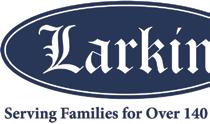
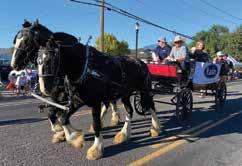
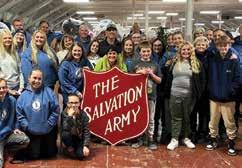
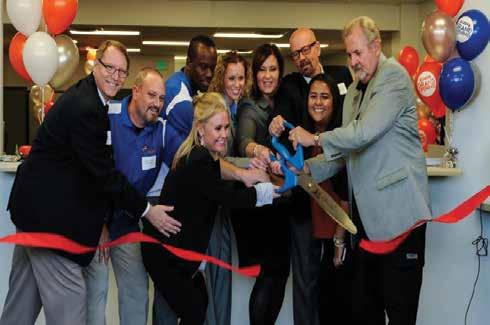


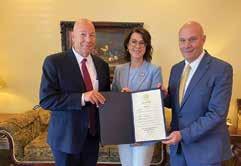
Larkin Mortuary’s dedication to the Utah community is deeply rooted in its history and family values. For over 140 years, spanning seven generations, the Larkin family has proudly served Utah families in their time of need. This commitment extends beyond providing funeral services; Larkin Mortuary actively engages with the community by hosting events and giving back through various service initiatives such as the annual Memorial Day Program, golf tournament, Trunk or Treat and Live Nativity.
Tips and tricks for lunch remix
Help for parents looking for healthy and fun school lunch ideas.
By Jet Burnham j.burnham@mycityjournals.com
foods, sugar and synthetic food dyes are the latest antitheses of healthy childhood nutrition. The USDA has called for changes to school breakfast and lunch menus that limit sugars and utilize locally sourced products. And the Utah Legislature just passed a bill to ban synthetic dyes and certain additives in foods served in Utah schools.
“There's definitely a big trend moving towards the more natural side of things, or trying to move away from that processed food and the artificial dyes,” Sharon Turner, a certified nutritionist, said.
Healthy food not only fuels kids’ physical development but it also boosts their ability to learn, said Turner, who works at the Utah State Board of Education.
“Students need to show up nourished and healthy to learn and perform their best, so it's important that they're getting a good breakfast and a good lunch, and they're able to pay attention in class and socialize and get the full benefit of their educational experience,” she said.
Keeping track of what kids should and shouldn’t be eating can leave parents feeling overwhelmed and unsure about what to pack in school lunches. Turner suggests three tips
to ensure kids have healthy, appealing and safe food to fuel their learning as they head back to school.
1. Pack a variety. Kids should eat an assortment of foods from wholesome food groups—fruits for fiber, carbs and natural sugars, and vegetables for nutrients such as iron, beta carotene and antioxidants. Whole grains and proteins complete the meal.
Try this: Charcuterie boards are a healthier reinterpretation of the Kraft Heinz Lunchables, which have always been popular with kids. Create your own by mixing and matching different ingredients from a variety of food groups and arranging them in a compartment-style container. Punch up the appeal with whimsical shapes created by cookie cutters or food molds.
2. Pack protein. “The best thing to do would be to pack something protein rich to keep the student satiated throughout the day,” Turner said. Options include hard boiled eggs, nuts, seeds, jerky, cheese, chicken salad, hummus, beans, peanut butter or protein pancakes, quinoa granola bars, edamame and overnight oats.
Try this: A protein-packed, crunchy alternative to potato chips is easy-to-make roasted chickpeas. Rinse and drain a 15.5 oz can of chickpeas/garbanzo beans. Let dry on a paper towel for 15 minutes. Toss with 1 tablespoon of olive oil, 1 teaspoon garlic salt and ½ cup finely grated parmesan cheese. Spread seasoned chickpeas on a baking sheet and bake for 25-30

minutes at 400 degrees or until crunchy. Recipe by Pretty Providence.
3. Pack ice. Send foods containing mayo, meat, dairy or eggs in insulated bags with an ice pack. “Not only are you making good choices, but the food is stored properly and safely as well, and it's not going to heat up and make the child sick,” Turner said. If that’s not an option, stick to foods that are shelf stable and appealing at room temperature such as crackers, muffins, freeze dried fruits and vegetables, trail mix or unpeeled whole apples or bananas.
Try this: Laura Fuentes of the website
MOMables suggests ice packs should be placed directly by the foods that need to remain cold. However, ice packs can add to the weight of an already heavy backpack and can also sometimes go missing. Her solution is to substitute ice packs with frozen food items that will keep foods cold but eventually thaw to become part of the menu. Foods you can freeze as an alternative for an ice pack include a juice box, bottled water, yogurt tube, applesauce pouch, banana (peeled), berries, grapes, pineapple or mango chunks, mini muffins and cheese sticks. l









Containers with compartments creates a colorful charcuterie-style lunch. (Adobe stock photo)
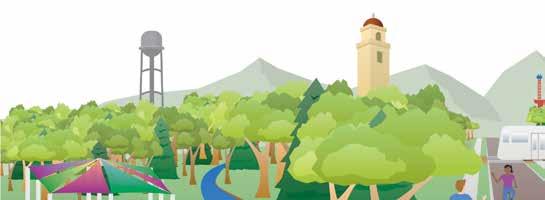
ON THE MOVE


Track Your Water Usage with EyeOnWater
Apply to Join the Youth City Council P.3 Fighting Opioid Misuse with Soccer
Cherie Wood, Mayor
801-464-6757 mayor@sslc.gov
City Offices
Monday - Friday • 8 am to 5 pm
801-483-6000
220 E Morris Ave, SSL, UT 84115
Public Meetings
For more info: www.sslc.gov
PLANNING COMMISSION
Thursdays, Aug 7 & 21, 7 pm
CITY COUNCIL
Wednesdays, Aug 13 & 27, 7 pm
CIVILIAN REVIEW BOARD
Monday, Aug 4, 6:30 pm
COMMUNITY CONNECT
Wednesday, August 20, 9 am
Feeling left out? Sign up for our monthly emails to get the latest City news delivered to your inbox. You decide what news you want: SSL Scoop city updates, Recreation, Arts Council, Mayor, Promise. Visit sslc.gov, or scan the QR code.


Mayor Cherie Wood
Building Brighter Futures through Education
The success of our youth is my highest hope. In South Salt Lake, Promise SSL is much more than an afterschool program, it represents our city’s dedicated efforts to empower and improve the lives of every child, family and resident, so that everyone has the opportunity to be healthy and prosper.
Launched this year, the “Baby & You” program is the final piece in the Promise SSL cradle-to-career pipeline, offering a 9-week workshop for new and expecting parents. It equips them with essential child development skills, builds confidence, and strengthens family and community bonds, laying a vital foundation for our youngest residents.
Through a partnership with The Mark and Kathie Miller Foundation, Promise SSL launched a pilot math boost program
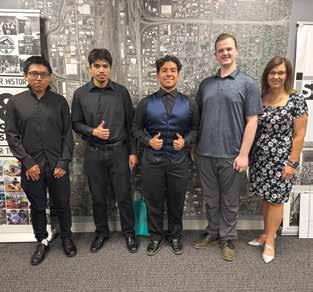
Know of a Cottonwood High Senior? Have them talk to their school counselor about applying for the South Salt Lake Mayor and City Council Scholarship.
for incoming 7th graders. This innovative program utilized new technology to help 19 students gain an astounding 22 math grade levels in just six weeks, typically a two-year process. This success has led to the establishment of a Math Academy at Granite Park Jr. High.
Our support for each child extends beyond high school; I believe strongly that every child should have the opportunity to attend and graduate from college. To support our students’ educational journeys, this spring four Cottonwood High seniors received Mayor and City Council Scholarships. While each student awarded had a different story, they each shared a common goal—to create a better life for themselves and their families through education.
We know that meeting our local youth and families’ basic needs is fundamental to achieving our goals, and it truly takes a village. By incorporating innovative educational programs and strong community partnerships we can better ensure the success of our youth, proving that teamwork and community spirit are at the heart of a brighter future for everyone.


Track
Your Water Usage with EyeOnWater
South Salt Lake Water customers now have access to EyeOnWater, an online app that lets you track your water usage and enable leak detection notifications. Underground irrigation leaks can go unnoticed and be costly. EyeOnWater can help notify you of potential leaks before you get an expensive bill in the mail. Sign up today and start tracking your water usage. Scan the QR code or visit sslc.gov to set up your account today.
Utility Rate Adjustments
July 1 is the start of the City’s new fiscal year. While we are pleased to announce the City Council passed a balanced budget without increasing taxes, there are some utility fee increases imposed by our partner agencies. These small increases will reflect on your July bill you receive in August. This only applies to residents who receive their utility service through South Salt Lake. If you are unsure, check your utility bill to see who supplies your service. If you have any questions, contact SSL Utility Billing at 801483-6074.
• Monthly garbage rate increase of $0.29 cents.
• Monthly sewer rate increase of $2.00 per unit.
• Annual sewer rate adjustment based on your past winter water usage.



and
Daily Obstacles by Attila Papp
Response by City staff.
This morning I found a scooter blocking “my” sidewalk. What should I do? Should I bury it in a ravine?
I asked neighborhood connect about abandoned scooters. I learned that there is no ordinance about it and the city cannot do anything. (They were nice and called the scooter company and they removed their scooters.)
Scooters are a serious obstacle for wheelchairs, strollers and they can endanger kids playing around them. As a homeowner I have to keep “my” sidewalk clean of snow, plants, debris and ice. I cannot block “my” sidewalk. What about scooters? Are they a liability? For me? For the city?
Scooter companies have zero responsibility and accountability over their property while unattended scooters are a nuisance. There should be a way to deal with them. It is not realistic calling the companies to get their property moved. I moved the scooter to the parking strip and I did NOT throw it in a ravine.
City Response
City ordinance 12.08.040 prohibits the obstruction of sidewalks, including scooters, and motorized vehicles are not allowed on sidewalks. Code Enforcement does respond to scooter complaints, but enforcement is not always easy and staffing resources are limited. The more effective process is to call the scooter company to have them remove the device, such as Lime customer service at 1-888-LIME-345. South Salt Lake encourages residents to be kind and considerate of neighbors, which includes keeping sidewalks clear for those walking dogs, pushing strollers, or using wheelchairs. Keep safety in mind. Be a good neighbor.


Deadline for Declaration of Candidacy
Residents of South Salt Lake wishing to file for one of the elected positions being voted on in the 2025 Municipal Election must file a Declaration of Candidacy form during the acceptance period of August 12-19, 2025. Forms must be submitted in-person to the City Recorder at City Hall at 220 E Morris Ave, Suite 200. Open elected positions include Mayor, Council District 2, District 3, At-large, and a special election for the second At-large seat. For full details on the Ranked Choice Voting process of candidacy qualifications, visit our Elections page at sslc.gov.
Resident
City dialogue. Story from Attila Papp, admin of Stand up for South Salt Lake Facebook group (see the original version there).

Ages 4 years old - 6 grade th
Scan the QR code or visit sslc.gov to register


































































Public Safety
Helping
Youth Stay in the Game — Soccer & Opioid Prevention in SSL
Young athletes face higher risk of opioid misuse due to the risks of injury from playing sports. The American Academy of Pediatrics found that people prescribed opioids during adolescence were 33% more likely to misuse opioids in early adulthood. This is a concern in our community, as sports such as soccer play such a big role in bringing our community together and increasing prosocial interactions.
Promise South Salt Lake is actively helping youth stay in the game and make healthy choices by pairing their youth summer soccer program with opioid prevention lessons from the Positive Action curriculum. The curriculum includes topics such as safe warm up/cooling down, proper hydration and nutrition for young athletes, opioid misuse prevention, injury prevention, meditation, and good sportsmanship.




Help prevent wild res! Never drive or park a vehicle over dry grass. Visit utah resense.org to learn more about preventing wild res in Utah.

Inform first responders of personal needs before the emergency Scan qr to sign up personal needs before






From $300 dreams to $1,000 realities—barbecue ain’t for the
Rainy days can be a food truck’s biggest villain.
By Shaun Delliskave s.delliskave@mycityjournals.com
WhenKenneth Hunt rolled into Utah in the summer of 2019, he brought with him a weathered smoker, years of culinary experience and an unwavering Texas pride. Now, six years later, he’s the owner and sole operator of Hunt’s Texas BBQ, a mobile barbecue operation serving slow-cooked brisket and pulled pork to hungry customers across the Salt Lake Valley. But behind the smell of mesquite smoke and the sizzle of meat is a oneman production fueled by grit, consistency and a love for the craft.
“My wife and two kids moved down here from Houston in June of 2019,” Hunt recalled. “After living in the Houston area for 40-plus years, I’ve had my fair share of hurricanes and storms and whatnot…we were just at the point to where we were tired of redoing a house and dealing with floods and everything that came along bad—the chemical plants and everything like that.”
Utah, with its mountain views and considerably less humidity, offered a fresh start.
“I’ve always enjoyed barbecuing for friends and family and coworkers and stuff like that, so I figured I’d take a shot. We bought this trailer, added some pits, and that was 6 years ago. Been going strong since then,” he said.
But “going strong” doesn’t mean it’s easy. Hunt runs the truck solo, managing the entire operation from purchasing to prep to service. His wife, a schoolteacher, is busy during the academic year, leaving Hunt to wear every hat in the business.
“I pretty much do all my shopping and scheduling and whatnot,” he said. “So it gets a little hectic and crazy trying to juggle every hat to wear and still put out some great Texas barbecue.”
The day often begins before sunrise. The raspy voiced entrepreneur still maintains his friendly Texas drawl.
“I start cooking about six in the morning. And of course, these briskets—shoot—they go 10 to 12 hours at least, so nothing’s really served day-of. I’m smoking briskets constantly and pork butts. But with barbecue, there is no exact time. When they’re done, they let you know they’re done.”
That intuition—listening to the meat— comes from experience, not a recipe book. Once cooked, meats are wrapped and refrigerated until serving.
Unlike a brick-and-mortar restaurant, a food truck requires strategy: site scouting, setup and building a customer base from scratch. Hunt wasn’t sure if Utah was going to be a permanent home, so the trailer offered flexibility.
“With the price of real estate for a storefront, you gotta put a big investment into that and really, really, really want to stay here and put down roots. With that being said, it’s a lot
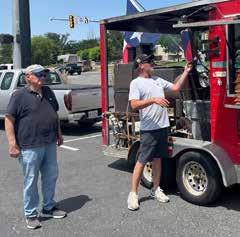
easier to chase the money, per se, with the food truck,” he said.
His livelihood was temporarily derailed as vandals hit his trailer one night. It took several days to get it in operating order.
And chasing the money means learning the terrain. Not every event is a winner.
“I remember my first year or so—if I could go out anywhere and make $300, I thought I was doing something really good,” Hunt said. “Now, six years later, those times have changed drastically.”
He’s learned which locations and partnerships are profitable, and which aren’t. For example, events with the local Food Truck League can be a double-edged sword.
“They’re great for starting out and stuff like that, but they do charge us food trucks 10%,” Hunt explained. “So always having to pay somebody money to do your own stuff is not really the best choice. You go out with 10 different trucks and some days it’s hard to make $1,000—you might only do $300 or $400. And for me, that’s not really sustainable.”
There’s also the logistical gamble of having too much food left over—a cardinal sin in Hunt’s book.
If he does bring anything back, it usually doesn’t excite his family. “After six years, my family really doesn’t care to dine on barbecue for dinner any longer.”
When the weather cooperates, business is better. “The rain is the only thing that'll stop me from serving. Nobody really wants to come out in the rain,” he said. “The snow—there’s no real problem here in Utah with the snow. People are used to it.”
Running the truck isn’t just about cooking—it’s also about customer service. And sometimes, that requires quick triage.
“There’s some people that want to be catered to when they come to you,” Hunt said. “And if there’s 20 people in line, you don’t always have that extra four minutes to sit and chat. Some people might get upset that I have to rush you through the line, but if it’s snowing outside, nobody really wants to wait 40 minutes to get their plate.”
Still, he makes time when he can. “If you
faint of heartburn
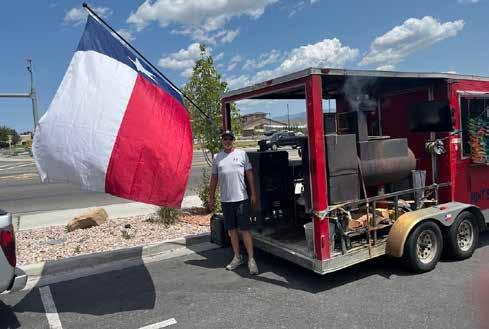
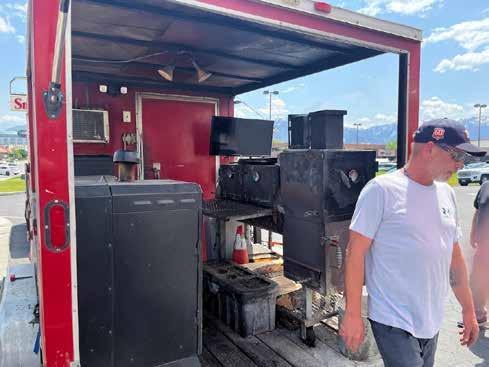
still want to chat when I’m done, more than happy to come outside the trailer and talk to you.”
Some days, he runs the truck five or six days a week. Other weeks, only twice. That’s the balance he tries to strike between work and life.
“My wife is a teacher and she’s off for summer, so there are times that I want to spend a couple days with her. We’ll take a vacation. I might cancel some events just so I can spend more time. Because it’s not always just about work.”
Even after six years, the flame hasn’t gone out.
“I still enjoy doing it,” he said. “I don’t know what else I’d do right now. After six
years of doing this—I still love it.”
You can find Hunt’s Texas BBQ trailer next location on Facebook or Instagram.l

Kenneth Hunt stands between his barbecue smokers and equally large Texas flag. (Shaun Delliskave/City Journals)
Kenneth Hunt checks on his smokers before serving some fresh brisket. (Shaun Delliskave/City Journals)
Kenneth Hunt goes over the menu with a customer. (Shaun Delliskave/City Journals)
Internet Essentials connects Utah communities
Comcast’s digital program offers low-cost, high-speed internet access.
By Peri Kinder peri.k@thecityjournals.com
Students are heading back to school and reliable internet access is more important than ever. Digital connection is necessary for online learning, enabling connection and collaboration for kids and parents alike. With Comcast Internet Essentials, it’s easy to have the access needed for school, work or staying in touch with friends and family.
Internet Essentials provides affordable, high-speed internet access to eligible households at $14.95 each month. This low-cost option, with speeds up to 75 Mbps, is designed for everyday use that includes online meetings, video calling, digital workshops and more. For those who need higher speeds, Internet Essentials Plus offers up to 100 Mbps for $29.95 per month.
“This program has connected more than 234,000 Utahns to a fast, reliable internet connection,” said Deneiva Knight, External Affairs Director, Comcast Mountain West Region. “In addition to affordable internet and devices, Internet Essentials customers also gain access to free digital skills training and access to millions of free Xfinity WiFi hotspots across the country, including more than 356,000 in
Utah.”
Internet Essentials customers can also purchase a low-cost Dell laptop or Chromebook for $149.99, plus tax. Each device has the hardware and software needed to get online right away, which makes it ideal for students, remote workers, or anyone needing a dependable device at home.
To qualify for the Internet Essentials program, customers must participate in qualifying assistance programs, including housing assistance, Medicaid or SNAP. Applicants cannot be an existing Xfinity customer (within the last 90 days) and can have no outstanding balance with Comcast. To learn more, check eligibility or sign up, visit internetessentials.com or call 1-855-846-8376.
Internet Essentials is part of Comcast’s $1 billion initiative to connect people to the internet, create digital opportunity and build a future of possibilities. By expanding internet access and offering digital skills training, Comcast hopes to provide opportunities to people of all ages and income levels.
“For more than a decade, Comcast has stepped up to ensure everyone can stay connected to what matters most,” Knight said. “We believe everyone should be able to connect to the power of home internet. Whether in rural communities or urban centers, we are working to make the internet accessible to all.” l
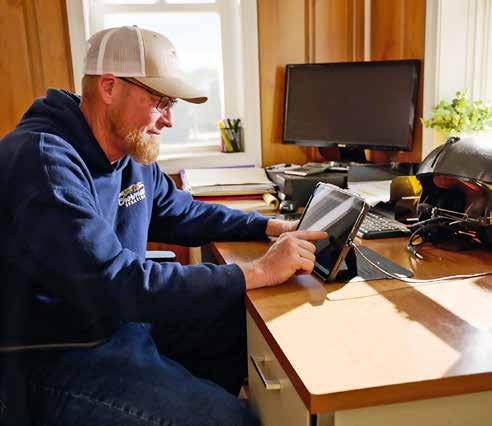
Favorite local eats for every mood and moment
By Holly Curby hello@hollycurby.com
Whether it's the sizzle of hibachi flames, the comfort of pasta inside a vintage trolley, or sharing fondue by candlelight, the way we dine shapes our memories just as much as the food itself. In a world that increasingly values experience as much as flavor, eating out has become more than a necessity or luxury— it's a ritual of connection.
According to the National Restaurant Association, more than 60% of Americans dine out at least once a week, and 45% of adults say restaurants are essential to their lifestyle. From special occasions to everyday indulgences, here’s a roundup of my personal favorite local spots, categorized by the kind of meal and mood you might be in.
Sometimes, the best side dish is fresh air. When the weather’s kind, there’s nothing like dining al fresco:
• Trellis Café – My personal go-to for patio dining. Nestled among greenery, the ambiance is as fresh as the seasonal dishes. Ideal for a relaxed summer lunch, but be sure to make reservations and tell the amazing hostess, Jenn, I say hello.
• Cafe Molise – With an elegant courtyard downtown, it's perfect for Italian fare under the open sky. Try the penne di caprino and creme brulee.
• Silver Fork Lodge – Up Big Cottonwood Canyon, this spot offers rustic charm, a wooden deck and mountain air that makes everything taste better.
• The Terrace Cafe at St. Regis (Deer Valley) – Elegant, upscale and offering panoramic views, their patio is a destination in itself. Guests are transported up to the restaurant in the complimentary funicular which is an experience in itself.
• The Cliff Dining – True to its name, you’ll dine perched above scenic terrain. Great food and even better sunsets.
• Ruth’s Diner – Escape the city into the serene ambience of Emigration Canyon. Check out their website for a schedule of live music on the patio.
If you’re after a unique setting, these places deliver delicious food with a side of novelty:
• Spaghetti Factory – Where else can you enjoy classic spaghetti and meatballs while sitting inside an old trolley car? It's quirky, nostalgic and surprisingly cozy.
• Prairie Schooner – Steak and hearty American fare served in covered wagons under dim lantern light. A nod to Utah's pioneer past, this one’s both tasty and theatrical.
• Billy Buncos – A fun, funky place where you dine under cars suspended above you. The food? Equally creative and satisfying.
If your meal is also a game night or show, these places turn dining into entertainment:
• Good Move Café – Board games and bistro-style eats? Count me in. It’s the perfect spot for casual hangouts, family nights or a low-key first date.
• Benihana or Bonsai – Teppanyaki chefs cook right in front of you with flair and fire. It’s dinner and a show, seasoned with soy sauce and laughter.
• Desert Star Playhouse – Family-friendly musical parodies in a western-themed saloon. Get ready to cozy in with your neighbor as you share a pizza or enjoy a good old-fashioned root beer float.
Whether it's a taste of Israeli cuisine or a club sandwich, here are a couple more must-visits:
• Feldman’s Deli – A standout for East Coast-style deli fare with an Israeli twist. Their pastrami sandwich is legendary, and every entree ordered brings a much-anticipated bite.
• The Coffee Shop at Little America Hotel – Sure, it's the sister hotel to the luxurious downtown Grand America, but their club sandwich? Perfection. Pair it with a walk around the manicured grounds of their neighboring sister hotel for a surprisingly affordable treat in an upscale setting.
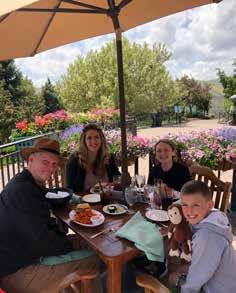
Dining out isn't just about convenience. It’s about atmosphere, ritual and the pleasure of sharing space with others—whether that’s with strangers gathered around a teppanyaki grill or loved ones sharing dessert under a starlit patio.
As Julia Child once said, “People who love to eat are always the best people.” And luckily, our local food scene is full of places that let you eat well—and live fully. Want to learn more about how to up your dining at home experience? Check out Holly’s Highlights podcast Season 3 Episode 14. Available wherever you listen to podcasts. Have a favorite dining spot or want me to come visit your restaurant? Connect with me at www.hollycurby.com. l
Comcast’s Internet Essentials program allows lower-income households to access high-speed internet and purchase low-cost devices. (Photo courtesy of Comcast)
Patio dining at Thanksgiving Point’s Trellis café. (Holly Curby/City Journals)
Savor the last days of summer with local foods and festivals
Eat up everything summer has to offer with festivals and events celebrating beloved local ingredients, rich cultural cuisine and skilled culinary artisans.
By Jet Burnham j.burnham@mycityjournals.com
Indian
Food Fair
Aug. 2, 11 a.m.-8 p.m. at Liberty Park
Spice up your summer with the fragrant flavors of Indian cuisine featured at the sixth annual Indian Food Fair. Enjoy authentic food, music, dance and culture.
Festival Gastronomico Mexicano
Aug. 2, 4-9 p.m. at Centro Civico Mexicano, 155 S. 600 West
Utah’s first Mexican Food Festival will feature authentic dishes, drinks and desserts highlighting the culinary diversity of the several regions of Mexico. Local restaurants, food trucks and traditional cooks and chefs will showcase the traditional and contemporary dishes that celebrate Mexico’s culinary cultural heritage.
Bear Lake Raspberry Days
Aug. 7-9 in Garden City
Bear Lake Raspberry Days celebrates all things raspberry to eat, drink and buy. Come for the famous Bear Lake raspberry shakes and stay for the nighttime Boat Light Parade and fireworks. The three-day celebration includes the traditional Main Street parade, boat parade, craft fair, carnival rides, group Zumba, live music, rodeo and fireworks. Dive into the fruity fun of the raspberry pie eating contest or delight in the razzle dazzle of the talent show. Compete for prizes and bragging rights by joining the kid’s fishing tournament, 5K fun run, golf scramble or cornhole and pickleball tournaments.
Lemon Bash
Aug. 15, 4-9 p.m. at Ken Garff University Club at Rice Eccles Stadium
This sweet event turns lemons into
lemonade by raising money for childhood cancer research through Alex’s Lemonade Stand Foundation. Cool down with refreshing lemonade and appetizers provided with free admission. Step into the casino room, place a bid at the silent auction or enjoy family-friendly activities and access to the field.
2025 Utah Cheese Awards Tasting Reception and Medal Ceremony
Aug. 24, 2-5 p.m. at 2Row Brewing in Midvale
A buffet of locally made cheese, fruit, honey, hot sauce, sweet sauce and more will celebrate this year’s top Utah cheesemakers and makers of cheese plate foods. Tickets to taste the buffet of the winners’ wares are $20, online or at the door.
Payson City Golden Onion Days
Aug. 29-Sept.1 in Payson
For 96 years, the people of Payson have celebrated their agricultural heritage with an onion festival. The many layers of the event offer something for every interest including a historic children’s parade, soap box derby, baby contest, talent show and car show. Residents compete for the prize of the biggest homegrown onions at the art and flower show. And, of course, there are food vendors selling onions of the “bloomin’ onion” variety to hungry festivalgoers.
Hooper Tomato Days
Aug. 30-Sept. 1 in Hooper
Hooper Tomato Days is bursting with tomato-town charm and themed activities such as the 5K Tomato Chase, Cherry Tomato Baby Show and Miss Pink Tomato pageant. With all the fixings of a traditional community spirit festival—barbecue competition, pancake breakfast, rodeo, live music, parade and fireworks—this year will honor its milestone 100th year by including features from the earliest years of the event such as a traveling band riding around town to rouse residents for the first day of the festival. The event also features unique smalltown sport with its dog race, cow drop contest, kids sawdust scramble and trash fishing.
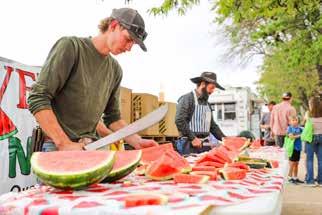

Salt Lake Greek Festival
Sept 5-7, Friday and Saturday 11 a.m.10 p.m., Sunday noon to 8 p.m.
Journey to the land of rich food, lively music and charming culture at the 49th annual Greek Festival. Sweet and savory Greek delicacies and traditional bouzouki music are as close as the north parking lot of Holy Trinity Cathedral at 279 S. 300 West in SLC.
11th annual Eat Drink SLC
Sept. 10 and 11, 5-8 p.m. at Tracy Aviary
Enjoy an elevated culinary experience sampling food and drink from locally owned restaurants, craft breweries and artisan purveyors while enjoying live music and dance performances.
SLC VegFest
Sept. 13, 12-8 p.m. at Library Square
Sample vegan dishes from local restaurants or discover your new favorite vegan baked goods at the ninth annual SLC VegFest. This local celebration of veganism and plant-based eating is family friendly, with a kids area and live music. An adults-only beer garden features all vegan varieties.
Festa Italiana
Sept. 13 and 14, Saturday 11 a.m.-10 p.m., Sunday 11 a.m.-7 p.m. at The Gateway Plaza

Slurp, swallow and savor a variety of region-based Italian cuisines, beer and wine as proud Italian-Americans celebrate their roots. Watch cooking demos and explore arts and crafts booths, or compete in the pizza or pasta eating contests. Learn about Italian culture through historical displays, live music, street performers, vintage bike show and exotic Italian car displays.
Brigham City Peach Days
Sept. 19 and 20 in Brigham City
Have a peachy keen time celebrating with a community proud of its produce. Peaches are the highlight of the event but the two days of festivities also include music concerts, car show, Harley and Custom Bike Show, quilt show and two different parades. Don’t miss the Brigham’s Beard Competition with categories for best mustache, best goatee, longest beard and best peach fuzz.
Melon Days Festival
Sept. 19 and 20 in Green River
For 119 years, Green River has celebrated their famously tasty melons and their growers with a parade and craft fair. Enjoy a slice of smalltown enthusiasm for melons at this year’s breakfast in the park, melon carving, photo contest, pony/unicorn rides, softball tournament, Fun Shoot, Melon Run, junior entrepreneur market and golf scramble. l
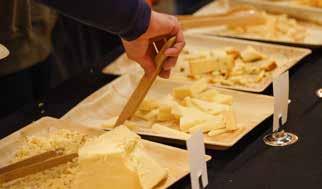
Eating juicy, locally grown melons is one of the main events at Green River’s annual Melon Days Festival. (Photo courtesy Robin Hunt)
A buffet of 2021’s Utah Cheese Maker winners’ prized products. Utah Cheese Awards Founder and Director Steven R. Jerman said the most competitive categories this year are cheddars, flavored cheeses and hot sauces. (Photo courtesy Steven R. Jerman)
izza and pasta eating contests are part of the fun at Festa Italiana. (Photo courtesy Sergio Coppa)
Watermelons are featured prominently in the annual Melon Days parade. (Photo courtesy Robin Hunt)
Wasatch Community Gardens expands its urban farming initiative with help from Tito’s Vodka team members
Community volunteers were aided by Tito’s Handmade Vodka team members as they helped to complete various tasks at Wasatch Community Gardens’ new city farm.
By Lizzie Walje l.walje@mycityjournals.com
Wasatch
Community Gardens is advancing its urban farming initiative with help from an unlikely collaborator, Tito’s Handmade Vodka based in Austin, Texas. For four years now, the spirits brand team members have assisted in the garden, helping to enhance its ability to deliver fresh produce to those in the community who are in need.
Wasatch Community Garden is one of many places that Tito’s has assisted over the years, thanks to its Block-to-Block program. The program has blossomed into a nationwide success, but like most programs, it started small. Per Tito’s website:
“The idea started in our own backyard: make fresh food accessible for Tito’s team members. We built the Fourteen Acres Farm (in Texas) to do just that, creating an environment where fresh produce is easily
accessible. From a no cost farmers market, to lunch cooked onsite using fresh produce from the farm, inspiration to eat well is everywhere you turn.”
Following the success of Fourteen Acres Farm, Tito’s decided to expand their efforts, creating Tito’s Block-to-Block, a program that seeks to help communities expand their ability to provide fresh produce to various communities. Tito’s has since partnered with various community gardens and nonprofits across the country, helping to bring education and resources to farmers, gardeners and community members alike.
This past June, Tito’s and Wasatch Community Garden came together once more, for a service day where volunteers worked alongside one another. This year one of the main goals was to build infrastructure designed to expand the garden’s food production capabilities. This included constructing a paved outdoor kitchen area, tending seedlings in the greenhouse, and preparing various garden beds for planting. These projects were all designed to help the farm reach its ultimate goal of becoming fully operational.
During their four years of partnership, Tito’s and the garden have accomplished a lot, including launching two new community gardens, building a greenhouse and revital-
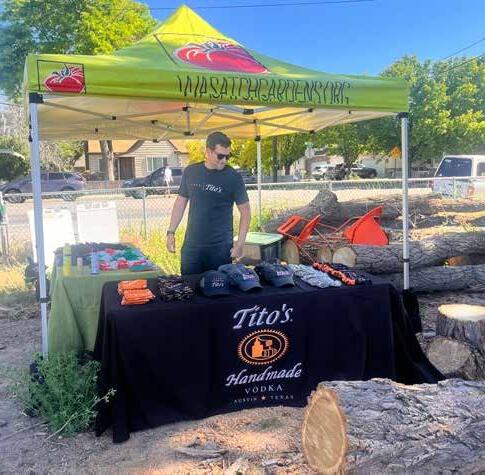
izing the Green Phoenix Farm in 2022. The following year in 2023, they began the initial transition to the new City Farm site. This was done by preparing the necessary materials and plants for transport. In 2024, they continued to carry out the second phase of the project by laying the structural groundwork for the ongoing relocation.
“This farm was built with plenty of people power. Whether it’s volunteers, donors, community partners,” said Katie Dwyer, the executive director of the garden. “They’ve helped us in our community garden spaces. They’ve also come to our old farm location to help build a greenhouse. They helped us move that location across town to this new site last year, and they’ll be helping us build a paved, outdoor kitchen.”
The kitchen will help the garden tremendously, serving as a space for volunteers to teach classes, such as how people can learn how to prepare and preserve the food they grow in their home gardens. The classes are yet another way that the garden hopes they can bring in more members of the community and make them aware of all the space has to offer.
This year’s day of service saw volunteers helping to transform a food preparation area, build a 900-square-foot patio, prep gar-
den beds and complete various tasks around the farm.
Per the event’s media release, “Food grown at the City Farm will be incorporated into daily meals for Wasatch Community Gardens program participants and distributed to community service organizations that provide meals and fresh produce to 1,000 low-income individuals and families in the area. The updated farm will also help Wasatch Community Gardens continue to serve the surrounding community. Annually, their programs and events serve over 13,000 people (about 50% coming from low- and moderate-income households) with the help of their dedicated volunteers. Last year, in 2024, 2,365 volunteers contributed 8,917 hours in support of the nonprofit and community members served.”
With another day of service in the rearview mirror, Wasatch Community Garden looks forward to more collaborations with Tito’s in the future, as they work toward securing City Farm as a pillar of food assistance in the community.
As Dwyer said, “Gardens and the sharing of food are what build community connections.”l
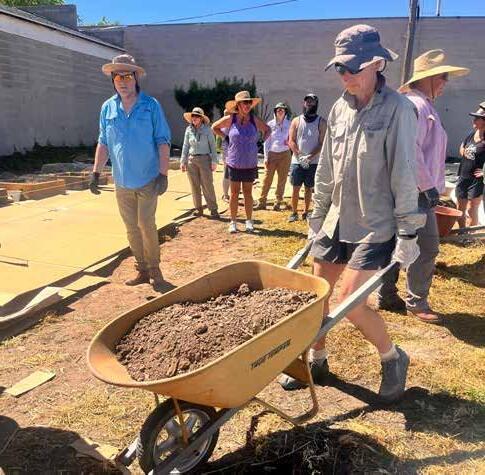
This year marks the fourth in which Tito’s has helped Wasatch Community Gardens as part of its Blockto-Block program. (Tito’s)
With help from Tito’s, community volunteers helped with numerous projects from building new plant beds to laying pavement for an on-site kitchen. (Tito’s)
August is National Self Awareness Month








TMS











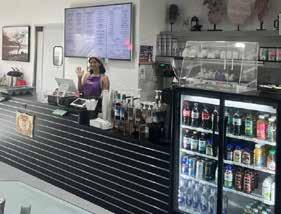


The Food Truck League helps
Company helps coordinate about 150 food trucks in the state.
By Darrell Kirby d.kirby@mycityjournals.com
The food trucks you see during summer events in West Valley City at places like Fairbourne Station Plaza and Centennial Park don’t just randomly show up.
They are set up there through the coordinated efforts of a company that pairs food trucks with event organizers.
The Food Truck League is a private venture that has been helping cities and businesses offer a variety of cuisine at their public and corporate shindigs since it started in 2015 “with the concept to make food trucks more accessible,” said the league’s operations manager Eliot Steimle.
The Food Truck League generates revenue by scheduling the trucks for various events and the operators of those trucks pay the league for hooking them up with the functions that want them there. Events include city-sponsored activities like West Valley City’s annual WestFest in June or businesses that hold employee gatherings that might require catering that the truck owners can provide. Wedding receptions are another destination for mobile kitchens.
Steimle said the league keeps a database
of information on the food trucks it directly works with, which totals about 150 of the 250 or so overall food trucks registered in the state. “We track the metrics, including how fast they can go, how much they can sell, how popular (they are), whether they show up on time, all of that kind of stuff,” Steimle said.
The majority of the trucks operate along the Wasatch Front, but the farther reaches of the state are also seeing more meals on wheels. “St. George is actually improving quite a bit as a food truck scene. There’s a lot more festivals and a lot more food truck use than there used to be,” Steimle said.
The truck operators are usually based in or near where they do business, rather than the trucks traveling long distances to get to an event. Steimle said that the truck owners often weigh the cost of running their operations and getting to the events against the amount of money they hope to make when deciding whether an event is worth attending.
The type of cuisine cooked up in the trucks is more than just tacos and other Mexican fare often seen around town. It can range from American favorites like burgers and fries to waffles, Chinese food and a fusion of international flavors. Sometimes the food truck operators dish up creations derived from family recipes. Other offerings are sweet treats such as ice cream and churros.


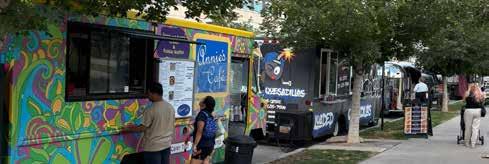
That mix of trucks is important in that too many serving the same or similar type of food can dilute the amount of business each truck can draw. A variety of edible delights is more likely to benefit each of the operators. “It’s all different kinds so everyone has a different option,” Steimle said.
For San Diablo Artisan Churros, the truck lineup helps determine what locations are best for the company’s trucks and its sugary treats. “If there’s a lot of sweet trucks there, we try not to go because the competition takes away from profits,” said Krystal, who preferred not to give her last name.
During the summer, Fairbourne Station Plaza is a regular spot for food trucks. Several of them line the street along the
grassy area of the plaza just west of city hall and West Valley Central bus and TRAX station on Wednesdays from June through August. WestFest in June is another hotspot for food trucks.
Besides Utah where the league is based in South Salt Lake, it also operates in Arizona, Denver, Dallas and even New Zealand. Steimle said its goal is to take one more thing off the plate of both the organizations planning an event and especially the food truck operators who are trying to find places to feed the crowds. “It’s outsourcing their front desk a little bit, so they can focus on sourcing food and prepping and everything like that.” l

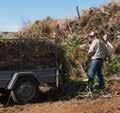
Food trucks line Lehman Avenue at Fairbourne Station in West Valley City in July. (Darrell Kirby/City Journals)

















3 County? City? What’s the difference?
Have you ever wondered what Salt Lake County actually does? If you live in one of the 23 cities in our area—like Murray, West Valley, South Jordan or Millcreek—you might think the county doesn’t affect your daily life. But the truth is, Salt Lake County helps all of us in big and important ways. Everyone who lives in the Salt Lake Valley is part of Salt Lake County.
Salt Lake County is like the glue that holds many parts of our community together. While cities take care of things like neighborhood parks and snow plowing on local streets, the county provides services that work best when shared by everyone. These regional services save money and help us all live better.
What Services Does Salt Lake County Provide?
Let’s break it down. Salt Lake County helps in areas like:
- Public Safety and Criminal Justice: The county runs the jail, provides prosecutors and public defenders, and helps with emergency response. In fact, public safety is the county’s biggest responsibility—it makes up over 74% of the county’s general fund.
- Elections: The county clerk makes
Aimee Winder Newton
Salt Lake
County

sure elections are fair and secure. Cities contract with the county clerk for their municipal elections.
- Health Department: The county helps keep our community healthy by inspecting restaurants, giving vaccines, and cleaning up unsafe places like abandoned camps.
- Senior Services: Through programs like Meals on Wheels and senior centers, the county helps older adults stay active and connected.
- Mental Health and Addiction: The county leads programs for people who need support with mental illness or substance abuse, partnering with other groups to reach more people.
- Libraries: The Salt Lake County Library system serves most of the area (Mur-




ray and Salt Lake City have their own), giving people access to books, computers and classes.
- Parks and Recreation: From big parks and trails to swimming pools and rec centers, the county helps families stay active both indoors and outdoors.
- Arts and Tourism: The county owns facilities like Abravanel Hall and the Capitol Theatre, and brings in out-of-state visitors through conventions and tourism, which boosts our economy. The county owns the Salt Palace and Mountain America Expo Center.
- Property Tax and Land Records: The county collects property taxes (even for cities and schools) and keeps track of land ownership and real estate records.
A Government That’s Smart With Your Money
Salt Lake County has a budget of about $2 billion. While that sounds like a lot, only part of it is under the County Council’s full control. About $500 million of the total budget is what we call “passthrough” taxes—meaning the county collects it and passes it to others, like UTA or cities.
To stay financially strong, the Salt Lake County Council keeps a close eye on
spending. They’ve helped the county keep a AAA bond rating—the highest possible score, showing the county is careful with its money. The council also does stress tests and checks each department regularly to look for savings and to improve services.
Utah law doesn’t let counties collect more money just because home values rise. Instead, counties can only collect more if there’s new growth, like a new building. That keeps taxes fair, but it also means the council has to plan ahead and budget wisely.
One County. Many Communities. One Mission.
Salt Lake County doesn’t replace cities—it supports them. Whether your city needs help with road signs, snow removal or mapping, the county can step in with expertise and resources. It’s about teamwork.
The county’s job is to serve, support and strengthen every community in the region. By managing big services, using your tax dollars wisely, and working across city borders, Salt Lake County makes life better for all of us.
So next time you vote, enjoy a park, visit the library, or call for help—remember, Salt Lake County is there for you. l
August is National Self Awareness Month

























There was no “gentle parenting” in the ’70s, especially at the dinner table. You either ate what was prepared for you, or you were labeled a sniveling, spoiled brat who didn’t care if children in China starved because you wouldn’t eat your meatloaf.
One time, I was forced to stay at the table until I’d eaten all my potatoes. I blame my dad. He had told me that potatoes have eyes and then lost his mind when I refused to eat mashed potatoes. I was convinced the lumps were eyeballs and I was not about to eat potato eyeballs.
I wasn’t trying to be picky, I just didn’t like things that were mushy, smelly, runny, squishy, eggy or slathered in mayo.
Grandma Stewart considered me the most coddled child in history. She could not fathom how I could reject her slimy bowl of lima beans, which included (if memory serves) onions, ham, shampoo and arsenic.
“If you don’t eat your lima beans, it just means you're spoiled,” she huffed when I put my head on the table to cry. She said the same thing when I refused to eat bread crust, cottage cheese, tuna fish or canned beets.
Side note: Grandma loved Jordan almonds, the only food she refused to share. She’d hide them from the grandkids because she knew we’d eat them. We scoured the cabinets until we found them and devoured every last one. I think that’s called a self-ful-
Foods that ruined my childhood
Peri Kinder Life and Laughter

filling prophecy, Grandma.
As a kid, terrible food was everywhere. If I wasn’t being subjected to a disgusting recipe Mom found in a McCall’s magazine, I was being betrayed by school lunch ladies. They’d slide a quivering square of delicious cherry Jell-O, topped with whipped cream, onto my lunch tray. But the joke was on me when I took a big bite of the tasty dessert only to learn it was sour cream, not whipped cream. Who does that to a child? Sadists, that’s who!
While eating dinner at a friend’s house, her mom shamed me for not eating the disgusting canned peas. So, I ate it and cried. It was just another meal I was forced to eat, like a hostage.
Sometimes, I’d take a proactive approach when it came to avoiding foods I didn’t like. Mom often made chicken pockets, which were shredded chicken mixed with cream cheese, baked into crescent roll dough. I hated cream cheese (mushy,

smelly). When I saw it in the fridge, I cried. I hid the box of cream cheese behind the wilted lettuce in the vegetable bin, but Mom always found it.
Other ploys included acting sick (rarely worked), “forgetting” about dinner while playing outside (never worked), pretending to sleep on the couch (sometimes worked) and throwing a fit at the dinner table (never worked, plus I lost dessert).
I don’t know why Mom refused to accommodate my delicate palate. I was only repulsed when it came to sauces, dressings, mustard, canned foods, Vienna sausages, tuna, cottage cheese, sour cream, maple syr-
up, vegetables, macaroni salad, yogurt, the textured vegetable protein popular in the ’70s or anything slathered in mayo.
It didn’t matter. I was expected to “Learn to like it, or else!” Or else, what? A grateful digestive system? A lack of nightmares? A healthy relationship to food?
With four daughters, I understand how hard it is to make meals for ungrateful children. I’ve had daughters who refused to eat pizza, spaghetti, meat, dairy products, lasagna, hamburger casserole or anything with onions. They probably have their own list of foods that ruined their childhood. That’s what therapists are for. l






































